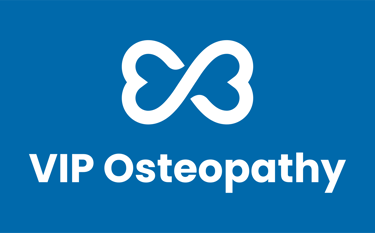Runner's Knee
How to Get Back on Track
VIP Osteopathy - Keilor
2 min read
If your knee aches during a run, flares up after using stairs, or nags while sitting with bent legs, you could be experiencing patellofemoral pain syndrome, often called “runner’s knee”. But don’t be fooled by the name—it’s not just for runners, and it’s rarely about the knee alone.
Let’s break it down so that you can move better, with less discomfort.
The Problem: That Nagging Ache Around the Kneecap
Runner’s knee is typically felt as a dull, aching pain around or behind the kneecap. It might worsen with activity—like running, squatting, or climbing stairs—or when you’ve been sitting for a while. Factors that may contribute to runner's knee include:
Overuse: including repetitive movement, especially without proper recovery
Muscle imbalances: weakness or tightness in the hips, thighs, or calves can shift stress to the knee
Poor biomechanics: how you move affects how force is distributed through the knee
Irritation of the joint: excess pressure on the kneecap can lead to pain and inflammation
It can be frustrating, limiting and people are often told that it’s just something that they have to live with. At VIP Osteopathy, we don’t believe that. Pain is a message—not a life sentence. Ignoring knee pain or pushing through discomfort can make things worse. Addressing the cause early can help prevent long-term issues.
The Pattern: It’s Not Just the Knee Doing the Work
The kneecap is meant to glide smoothly as you bend and straighten your leg. But if the surrounding structures aren’t working well together, the tracking of the patella gets thrown off—creating friction, irritation, discomfort or pain.
Here are a few common patterns that we often find with runner’s knee:
Hip or glute muscle weakness that can affect control during movement
Tightness in the quads or ITB that alter kneecap alignment
Foot biomechanics, like overpronation or reduced ankle mobility
Sudden changes in training load and increasing distance, speed, or surfaces too quickly
In most cases, it’s not one isolated issue. It’s how the body is compensating around the knee—and that’s what we’re here to help with.
The Plan: Support That’s Personal, Not One-Size-Fits-All
When you come to VIP Osteopathy, we take a holistic big-picture approach at how your whole body moves—not just your knee. You’ll be seen, heard, and treated like a human being, not just a set of symptoms. We’ll work together to help:
Reduce the pain and inflammation, so you can move with more ease
Restore muscle balance across your hips, knees, and feet
Build a tailored rehab plan that fits into your life (and won’t gather dust) that aims to help you return to running or moving without discomfort
Your treatment plan might include:
Hands-on osteopathic treatment to improve joint mobility and tissue flexibility
Strength and stability exercises to support better movement control
Advice on training, recovery, footwear, or desk setup—whatever your body needs
And yes, we’ll talk about your goals: whether that’s running a 10K, walking pain-free at work, or simply getting through the day without thinking about your knee.
You’re not just a knee. And you’re definitely not just a number. At VIP Osteopathy, we’re here to help you move better, feel stronger, and return to the activities that you love.


Contact us
Address: Consulting out of The Sports Recovery Hub
767 Old Calder Highway, Keilor, VIC, 3036
Telephone: 0476 807 144
Email: hello@viposteopathy.com.au
© 2025. All rights reserved.


